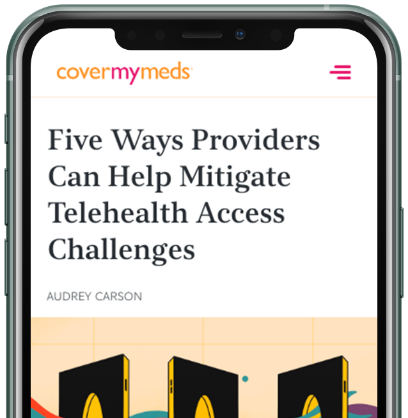Patients as Consumers: Help Control Out-of-Pocket Healthcare Expenses
Consumerism in health care puts patients in charge of how they spend their money. Patients increasingly treat health care like any other purchase, reading online reviews before investing in a provider or a treatment.

This consumerism is, in part, fueled by a desire to lower out-of-pocket spending. According to TransUnion Healthcare, 2017 saw an 11 percent increase in the average patient’s out-of-pocket costs.Patient Payment Responsibility Increases 11% in 2017 For patients who struggle to control high out-of-pocket healthcare costs, gradually rising deductibles contribute to the problem. Among Americans with health insurance, 26 percent have a deductible of at least $2,000, and trends indicate that average will continue to creep upwards.Premiums for Employer-Sponsored Family Health Coverage Rise 5% to Average $19,616; Single Premiums Rise 3% to $6,896,Employer-Sponsored Insurance, 2013-2017: Premiums Grow Faster, Deductibles Continue to Increase
Patients are trying to limit their expenses
To control rising out-of-pocket health care costs, patients often turn to cost-saving tactics that may ultimately delay care. This usually starts with trying to save money on medications.
Forty-two percent of patients with a high deductible have utilized online tools to identify where they can purchase the lowest out-of-pocket prescriptions or that offer medication discounts.CoverMyMeds Patient Survey, 2018 However, because prescription medication costs can vary greatly between pharmacies, price shopping can be a confusing venture that delays treatment.
Upon arriving at the pharmacy, some patients are shocked at the cost of their medications. In fact, 75 percent of patients have received a prescription that cost more than they expected.CoverMyMeds Patient Survey, 2018 When faced with the choice of filling an expensive prescription, many leave the pharmacy without it—50 percent of patients have opted not to fill a prescription because it cost too much when they arrived at the pharmacy.CoverMyMeds Patient Survey, 2018 And even if they do fill the prescription at least once, 37 percent of patients have chosen to stop taking a medication because it was too expensive.CoverMyMeds Patient Survey, 2018
Prescription abandonment results in billions of dollars in avoidable healthcare spending each year.Interventions to Improve Adherence to Self-administered Medications for Chronic Diseases in the United States: A Systematic Review Furthermore, when patients don’t adhere to their prescribed therapies, they risk disease relapses and complications, sometimes even leading to hospitalizations. Medication non-adherence, which encompasses prescription abandonment, accounts for 10 percent of all hospital admissions and results in 125,000 deaths annually.The Cost of Not Taking Your Medicine
How can providers step in?
Providers can help patients control out-of-pocket expenses by informing them ahead of time what they can expect to pay for prescribed therapies at the patient’s preferred pharmacy. Eighty-seven percent of patients agree that it would be valuable if their provider knew the cost of the medication they intended to prescribe.CoverMyMeds Patient Survey, 2018
To achieve this level of price transparency at the point of prescribing, many providers rely on a real-time benefit check (RTBC) solution. RTBC is a technology innovation that shows prescription benefit details, such as patient out-of-pocket costs, drug alternatives and prior authorization requirements. This insight enables providers to make informed medication choices based on discussions with the patient about clinical efficacy and affordability.
The majority of providers (86 percent) agree that RTBC solutions would help them make more informed prescription decisions.CoverMyMeds Provider Survey, 2018 Having accurate visibility into prescription benefit information helps improve discussions about the out-of-pocket drug cost, so providers can understand a patient’s financial needs when making a prescription decision. These conversations are vital to keep out-of-pocket healthcare costs down.
RTBC solutions are rapidly gaining popularity. For a comprehensive, objective overview of the technology, view the 2018 Real-Time Benefit Check National Adoption Scorecard.
The latest healthcare insights, floated right to your inbox.





